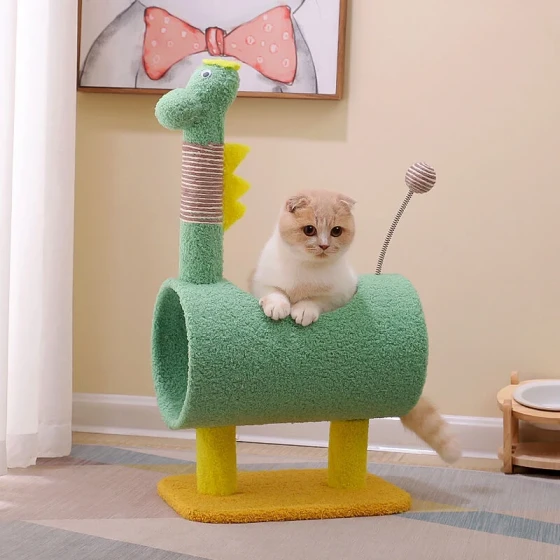How to judge the first day of feline panleukopenia_key symptoms and methods for early diagnosis of feline panleukopenia
Feline panleukopenia, scientifically known as feline parvovirus infection, is a highly contagious disease caused by the feline parvovirus, with a very high mortality rate especially in kittens. Understanding the early symptoms of feline panleukopenia and timely diagnosis are crucial as they can secure valuable time for subsequent treatment. On the first day of feline panleukopenia, cats may show some non-specific symptoms, but by combining knowledge of the virus transmission routes and the cat’s mental state, we can preliminarily assess the risk and take action.

Early signals of feline panleukopenia “showing up at your door”: watch out for these key symptoms
The feline parvovirus is very resilient and can be transmitted through direct contact with the feces, vomit, saliva, and other secretions of infected cats. It can also spread indirectly through contaminated environments, feeding utensils, toys, or even human clothing and shoe soles. Therefore, even indoor-only cats are at risk of infection. The incubation period of feline panleukopenia usually ranges from 2 to 9 days, and some cats may start shedding the virus a few days before symptoms appear.
On the first day of feline panleukopenia, the cat’s symptoms may not be typical and can easily be mistaken for general discomfort. However, as a cat owner, you need to remain highly alert to these early warning signs:
- Lethargy, listlessness. This is a non-specific symptom common to many diseases but is often an early manifestation of feline panleukopenia. The cat may become less active, lose interest in toys and interaction, and always find a corner to curl up, appearing very weak.
- Loss of appetite or complete refusal to eat. Many cats with feline panleukopenia show reduced appetite or even stop eating entirely in the early stage.
- Elevated body temperature. One typical sign of feline panleukopenia is fever, with body temperature rising above 40°C. Some cats may experience biphasic fever, where the temperature rises, returns to normal, then rises again after a few days.
- Mild vomiting. Although persistent vomiting is common in later stages, a few episodes of vomiting, often just stomach fluids or food residue, can occur early on.
- Increased eye and nasal secretions. Some cats may develop a small amount of sticky discharge from the eyes or nose in the early phase.
It should be noted that these symptoms are not unique to feline panleukopenia; other diseases can cause similar signs. For example, feline colds also produce runny noses, sneezing, and eye/nasal discharge but usually do not lead to a sharp decrease in white blood cells or severe gastrointestinal problems.
How to preliminarily judge and diagnose feline panleukopenia: key steps not to be ignored
When suspecting feline panleukopenia based on the symptoms above, cat owners must not take it lightly. The best course of action is to take the cat immediately to a veterinary hospital for professional examination and diagnosis. Early diagnosis is critical for treatment.
At the veterinary hospital, vets typically diagnose feline panleukopenia through the following methods:
- Medical history inquiry and clinical examination. The vet will ask detailed questions about the cat’s symptoms, vaccination history, and contact history, then perform a thorough physical exam, assessing the cat’s mental state, temperature, dehydration level, and more.
- Complete blood count (CBC) test. This is an important diagnostic tool for feline panleukopenia. The virus mainly attacks rapidly dividing cells in cats, including those in bone marrow and intestines. Thus, infected cats show a significant reduction in white blood cell count and sometimes red blood cells as well. A white blood cell count significantly below normal strongly suggests feline panleukopenia.
- Feline panleukopenia virus antigen test (snap test). This is a quick and easy method that detects viral antigens in feces, vomit, or secretions, providing results within minutes. If two lines appear on the test strip, it typically indicates a positive result. However, sensitivity may be affected by the virus shedding amount, and false negatives can occur. Vaccinated cats may also sometimes test false positive.
- PCR test. Polymerase chain reaction (PCR) testing can more accurately detect the virus’s genetic material, improving diagnostic accuracy.
Combining clinical symptoms and laboratory results, the vet can make a definitive diagnosis.
Diagnosed with feline panleukopenia, what’s next?
Once a cat is unfortunately diagnosed with feline panleukopenia, it is essential to follow the vet’s professional advice and cooperate actively with treatment. Although the mortality rate is high, especially for kittens, prompt and effective treatment can significantly improve survival chances.
Current treatment for feline panleukopenia mainly involves supportive care, aimed at helping the cat pass through the critical period and relying on its own immune system to overcome the virus. Supportive treatments usually include:
- Fluid therapy. It is crucial to promptly replenish fluids and electrolytes for cats suffering dehydration and electrolyte imbalances caused by vomiting and diarrhea.
- Nutritional support. Ill cats often lose their appetite and require nutrition through tube feeding or intravenous fluids to maintain strength.
- Antibiotics. Feline panleukopenia causes reduced white blood cells and lowers immunity, making cats prone to secondary bacterial infections. Antibiotics help prevent and treat these infections.
- Anti-vomiting and anti-diarrheal drugs. To relieve vomiting and diarrhea symptoms and reduce discomfort.
- Other supportive care. Including keeping warm, environmental hygiene, and disinfection.
Remember, there is no specific drug that directly kills the feline panleukopenia virus, so treatment requires patience and careful nursing.
Prevention: the “golden shield” against feline panleukopenia
The most effective way to prevent feline panleukopenia is timely vaccination. Kittens usually start their first feline panleukopenia vaccine at 6-8 weeks old, followed by doses every 3-4 weeks until about 16 weeks of age for basic immunity. Adult cats also need regular booster shots.
Besides vaccination, pay attention to the following points in daily life:
- Avoid the cat’s contact with pathogens. Try to prevent contact with unvaccinated cats or strays.
- Maintain environmental hygiene. Regularly and thoroughly disinfect the cat’s living area, feeding tools, and litter box. While the feline parvovirus is resistant to many disinfectants, sodium hypochlorite (such as diluted household bleach) and glutaraldehyde solutions are effective.
- Pay attention to personal hygiene. After going out, clean hands and clothes before interacting with cats, especially after visiting vet clinics or places with many cats.
Frequently Asked Questions
Q1: What’s the difference between feline panleukopenia and feline upper respiratory infections (cat cold)?
Feline panleukopenia is a systemic infectious disease caused by feline parvovirus, mainly attacking the intestines and bone marrow, causing decreased white blood cells and severe gastrointestinal symptoms. Feline upper respiratory infections are caused mainly by feline herpesvirus or calicivirus causing respiratory signs like sneezing, runny nose, and eye/nasal discharge, but usually don’t cause a sharp white blood cell decrease or serious digestive issues.
Q2: Can cats still get feline panleukopenia after vaccination?
Vaccination greatly reduces the risk of infection but does not guarantee 100% protection. In rare cases, cats with weakened immunity, high virus exposure, or vaccine failure may still get infected, but symptoms are usually milder in vaccinated cats.
Q3: Can feline panleukopenia infect humans or other animals?
The virus mainly infects felines and does not usually infect humans. Different parvoviruses infect different species; for example, canine parvovirus mainly infects dogs.
Q4: If one cat in the household has feline panleukopenia, what about the others?
Immediately isolate the sick cat from others and thoroughly disinfect all items and environments the sick cat has contacted. Other cats without full vaccination should be brought to the vet for vaccination or boosters immediately.
Q5: Can feline panleukopenia relapse after recovery?
Recovered cats usually develop some immunity. However, the virus can be shed in feces for weeks or longer, posing a risk of transmission. Although relapse is rare, care and avoidance of pathogen contact are important.
In summary, feline panleukopenia is a dangerous disease, but early symptom recognition, timely medical treatment, and active care are key to improving survival. As responsible cat owners, understanding feline panleukopenia knowledge and practicing prevention measures enable us to better protect the health of our furry companions.


-560x560.webp)
